Assessing the Global Climate in 2019
NCEI News Feed
http://www.ncei.noaa.gov/news/global-climate-201912
NCEI News Feed
http://www.ncei.noaa.gov/news/global-climate-201912
NCEI News Feed
http://www.ncei.noaa.gov/news/ams-2020
Jan. 10, 2020
By Moira Harrington
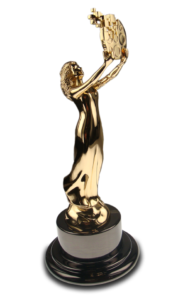
A group of second-graders expand their knowledge of Lake Superior through a canoe trip. A workshop is held about that same lake and its strong and dangerous currents. These different topics share a common thread. Both were subjects of audio podcasts last year. Those podcasts were just named award-winning by an international communications competition known as AVA Digital Awards.
“Connecting teachers and students to the Lake Superior watershed” won a gold medal. It’s about a Sea Grant-funded educational program called Rivers2Lake, which shows children from school districts in Bayfield, Ashland and the South Shore of Lake Superior how nature can be a classroom. The program is run by the Lake Superior National Estuarine Research Reserve.
“It takes a family to deal with dangerous currents” won an honorable mention. Interviews are featured with participants and presenters at a workshop held in Ashland about this hidden but potentially lethal hazard.
Podcast Producer Marie Zhuikov said, “The people who I interview are what make these stories so interesting. Instead of the standard phone conversation, I was able to get out of my office and talk to these people in the field, which makes the stories livelier and more immediate.”
Conferred annually, the AVA Digital Awards attract an average of 2,500 entries from around the world. They come from the private sector, nonprofit organizations, public entities and academic institutions. The awards are administered and judged by the Association of Marketing and Communication Professionals, which consists of several thousand specialists in production, marketing, communication, advertising and public relations, plus freelance journalists.
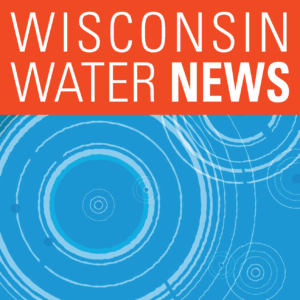 Wisconsin Sea Grant offers a broad range of podcasts on topics such as lakes Michigan and Superior, groundwater, aquaculture and mercury in the environment. The recent award-winning stories are part of a series known as Wisconsin Water News, which has 20 episodes. The four-to-seven-minute podcasts bring Sea Grant and Water Resources stories alive by featuring the voices of scientists, resource managers, stakeholders and staff in audio presentations of news pieces that are also shared in print or online formats.
Wisconsin Sea Grant offers a broad range of podcasts on topics such as lakes Michigan and Superior, groundwater, aquaculture and mercury in the environment. The recent award-winning stories are part of a series known as Wisconsin Water News, which has 20 episodes. The four-to-seven-minute podcasts bring Sea Grant and Water Resources stories alive by featuring the voices of scientists, resource managers, stakeholders and staff in audio presentations of news pieces that are also shared in print or online formats.
News Release – WRI
https://www.wri.wisc.edu/news/sea-grant-and-water-resources-win-awards-for-podcasts/
Seven U.S. Geological Survey scientists will share their research at the workshop. Topics will include satellite-based detection of harmful algal blooms, mercury in Hells Canyon reservoirs, and monitoring of selenium and mercury in the Kootenai River. A full schedule of USGS speakers and topics is available for download. For more information on the workshop, please visit https://www.deq.idaho.gov/water-quality-workshop.
USGS speakers at the 2020 Idaho Water Quality Workshop
(Public domain.)
USGS.gov
https://www.usgs.gov/center-news/usgs-scientists-presenting-30th-annual-idaho-water-quality-workshop
|
||||||||||||||||||||||||||
|
||||||||||||||||||||||||||
|
Blog – Freshwater Future
https://freshwaterfuture.org/uncategorized/freshwater-weekly-january-9th-2020/
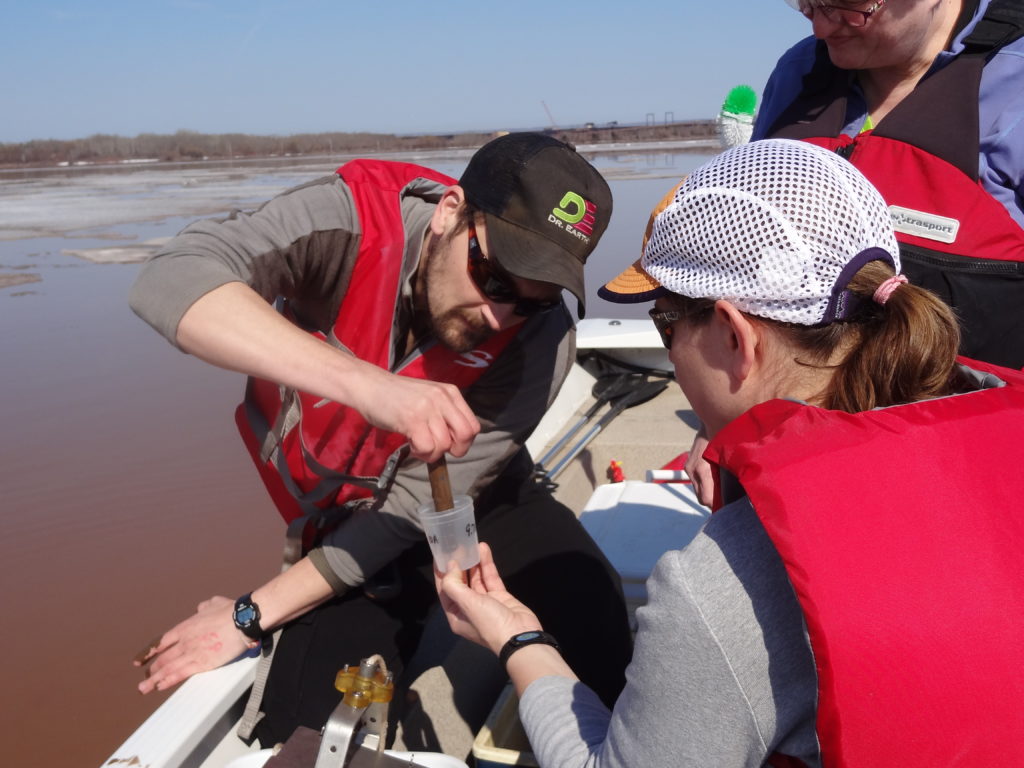
Wisconsin Sea Grant-funded researchers collect a sediment sample from the St. Louis River Estuary. (Photo: Marie Zhuikov)
When the calendar flipped to 2020, we entered a new year – specifically, an election year. The political news stories, tweets and advertising that made for a solid background thrum last year will ratchet up to full noise now.
One hallmark of a presidential election year is the plethora of polling. We’ll see candidate horse race polls and those probing the electorate’s stance on a range of issues. Polls will be sliced and diced, agonized over and celebrated.
Since we’re in the season of polls, I want to highlight not a primarily political one, but one by Gallup that measured public trust in various institutions. Conducted in June 2019, the poll asked U.S. citizens what they were proud of regarding their country. Out of eight choices, 91% of respondents said they were most proud of American scientific achievements—the top pick. The military (89%) and domestic arts and culture (85%) rounded out the top three choices.
The bottom-ranked choice was the American political system with only 32% expressing a positive feeling about how the parties and our government conduct themselves.
The remaining categories in the poll included pride in the country’s economic (75%) and sporting (73%) achievements; diversity in race, ethnic background and religion (72%); and the health and welfare system (37%).
Naturally, we do not know who will prevail at the ballot box this November. At least one true winner is clear, according to the recent Gallup poll anyway: science.
Blog – Wisconsin Sea Grant
https://www.seagrant.wisc.edu/blog/the-polling-winner-science/
Jan. 9, 2020
By Jennifer A. Smith
Too much salt is never a good thing—whether on your dinner plate or on sidewalks, driveways and roads during a long Wisconsin winter.
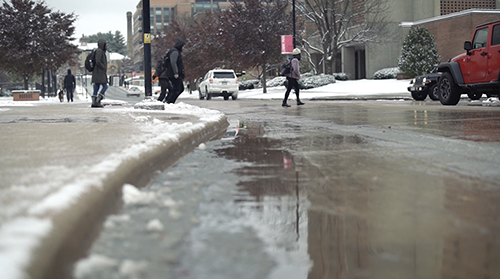
When that salt dissolves on paved surfaces, it goes anywhere the water goes, making its way from storm drains into lakes and other waterbodies. That salt runoff increases the concentration of salt in our waters, affecting not only surface water but also groundwater (the source of drinking water for most Wisconsinites).
Thanks to a new video (two, actually), Wisconsinites can brush up on their salt smarts. The videos were backed by a group of partners that included the University of Wisconsin Water Resources Institute, UW-Madison, UW-Madison’s Nelson Institute for Environmental Studies, Wisconsin Salt Wise and the Madison Metropolitan Sewerage District.
A five-minute video is aimed at general audiences, offering tips on how to apply de-icing products most effectively, depending on the air temperature, pavement temperature and type of product. The amount of salt needed to be effective may be less than you think! For example, just one coffee mug full of salt can treat a 20-foot driveway or 10 sidewalk squares.
A longer, ten-minute version of the video was designed for UW-Madison maintenance staff, who work tirelessly throughout the winter to keep the campus a safe place.
As the video notes, the Wisconsin Salt Wise website has a product application calculator that can help take the guesswork out of this task.
Abigail Ernst, who completed her master’s degree in water resources management at UW-Madison in December 2019, worked on the videos’ content and appears onscreen along with fellow water resources student Tristyn Forget. The videos were part of Ernst’s practicum for her degree. As she noted, this project grew out of stakeholder needs. While UW-Madison custodial staff strive to be mindful of salt use, they also knew it was an area for improvement and ongoing staff training.
Said Ernst, “One of the most rewarding parts of producing this video was the wide variety of people I got to collaborate with. I enjoyed working closely with the custodial department, specifically Kris Ackerbauer, Steve Heitz, Brad Marta and John Brixy. They are such a welcoming and accommodating group. I was so happy we could develop a training video that was primarily driven by their wants and needs.”
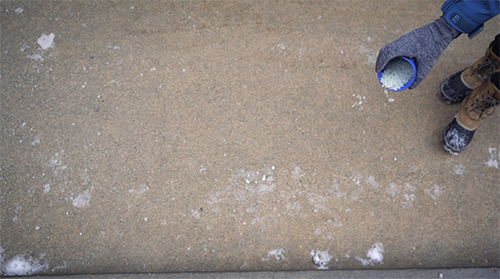
While translations of the longer video are still in progress, eventually it will be captioned in Tibetan, Hmong, Spanish and Nepali—which, along with English, are the most common languages spoken by UW maintenance staff.
Bonnie Willison, video producer for the Water Resources Institute and Wisconsin Sea Grant, worked with Ernst and other collaborators to bring the content to life in a concise and compelling way.
Both videos bring science and practical tips together to address what Hilary Dugan, a UW-Madison assistant professor of integrative biology interviewed in the videos, stresses is a solvable problem.
By brushing up on our winter knowledge, we can all do our part to promote public safety (after all, no one wants to wipe out on the sidewalk!) while protecting our freshwater resources.
News Release – WRI
https://www.wri.wisc.edu/news/new-videos-can-help-you-brush-up-on-your-salt-smarts/
The Idaho Department of Environmental Quality hosts its 30th Annual Idaho Water Quality Workshop, February 11-13, at Boise State University.
Upper Midwest Water Science Center
Upper Midwest Water Science Center
http://www.usgs.gov/news/usgs-scientists-presenting-30th-annual-idaho-water-quality-workshop
With the new year comes a rating of “outstanding” for the University of Wisconsin Water Resources Institute (WRI) based on a review conducted in 2019 by the program’s funders at the U.S. Geological Survey.
Earl A. Greene, director of the Water Resources Research Act Program, transmitted the review results to WRI’s Director Jim Hurley in a Jan. 2, 2020 letter that commended WRI for its strong program, “well focused on research to solve state water issues, student education and information transfer. This well balanced program is instrumental in achieving the goals of the Institute.”
The letter went on to call out the efforts of funded researchers who are publishing at a high rate in well-regarded publications, the program’s leadership and excellent information transfer efforts that are well integrated with research.
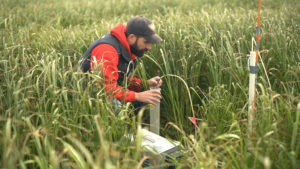
The federal review panel evaluated the activities of 54 water resources institutes and centers, based in each of the 50 states, as well as the District of Columbia, Puerto Rico, U.S. Virgin Islands and Guam. The years under review had been 2011 through 2015.
“Each day, I am gratified by the work that we are able to accomplish through the Water Resources Institute, whether it’s supporting Wisconsin’s researchers in finding ways to identify and reduce contaminants in our drinking water, understanding the effects of climate change on Wisconsin waters or supporting students in learning and in developing our workforce. Along with our mission to share research findings with you and other relevant audiences, we play an important role in addressing Wisconsin’s water challenges and opportunities,” said WRI’s Associate Director Jennifer Hauxwell.
“The findings of this U.S. Geological Survey review of our program are just another welcome validation for what we are able to do for our fellow citizens who rely on one of Wisconsin’s most valuable assets – water,” she concluded.
News Release – WRI
https://www.wri.wisc.edu/news/outstanding-results-for-wri-following-a-five-year-review/
Per- and polyfluoroalkyl substances (PFAS) compounds are man-made chemicals found in nonstick cookware, flame- and water-resistant clothing, food wrappers, plumber’s tape, stain prevention products, and even coatings on wires. Unfortunately, now we know PFAS are toxic, harmful to human health, and extremely persistent in the environment.
The Michigan Department of Environment, Great Lakes, and Energy (EGLE) Drinking Water and Environmental Health Division are holding three public hearings on the proposed rules that would establish how much of seven PFAS compounds:
Meeting dates, times and locations:
Wednesday, January 8, 2020, from 5 pm-8 pm at Grand Valley State University, LV Eberhard Center, Room EC 215, 301 Fulton Street W., Grand Rapids, Michigan. This meeting also will be Livestream. Click here to sign-up for the Livestream option.
Tuesday, January 14, 2020, from 5 pm-8 pm at Washtenaw Community College, Morris Lawrence Building, ML Towsley Auditorium, 4800 E. Huron River Dr., Ann Arbor, Michigan.
Thursday, January 16, 2020 from 5pm-8pm at the Ralph A Macmullan Conference Center, Au Sable Room, 104 Conservation Dr., Roscommon, Michigan.
Don’t miss your chance to provide your comments about these important rules. You can attend one of the meetings above or submit your comments in writing by Friday, January 31, 2020, to EGLE-PFAS-RuleMaking@Michigan.gov.
To make it easier to submit comments, we’ve prepared a few items we are most concerned about in the proposed rules. Please recommend that Michigan EGLE do the following:
Take a class-based approach to regulate PFAS in drinking water.
Ensure that the health-based value used to set the PFAS-class drinking water standard protects those most vulnerable to harm.
Use the most recent science to set a health-based value PFAS-class drinking water standard.
To view a calendar of all the events and meetings regarding the PFAS Rules public meetings click here. Presentations from site-specific meetings may be found on MPART’s Public Presentations page.
Blog – Freshwater Future
https://freshwaterfuture.org/uncategorized/michigan-pfas-rules-public-meetings-how-to-submit-comments/
Environmental Leaders Urge Army Corps of Engineers to Include Great Lakes Projects in Work Plans
ANN ARBOR, MICH. (Jan 7, 2019) — Last month, a coalition of environmental organizations came together to urge Assistant Secretary of the Army (Civil Works) R.D. James and Office of Management Budget Acting Director Russell Vought to include critical Great Lakes Restoration Projects in the FY2020 work plan for the U.S. Army Corps of Engineers.
As threats to the health of the Great Lakes continue to intensify, the coalition urged the Office of Management Budget and the Secretary of the Army to ensure that vital funding for Great Lakes restoration projects remain a priority.
“We are grateful for the much-needed support the region has received with investments leading to on-the-ground results across Illinois, Indiana, Michigan, Minnesota, New York, Ohio, Pennsylvania and Wisconsin,” the coalition wrote, “However, the Great Lakes still face many urgent problems and we urge the Corps include projects of critical importance to the Great Lakes in the FY2020 Work Plan. The problems we face will only get worse and the price we pay will be much higher if the federal partnership with the region is delayed or scaled back.”
The post Environmental Leaders Urge Army Corps of Engineers to Include Great Lakes Projects in Work Plan appeared first on Healing Our Waters Coalition.
Healing Our Waters Coalition
https://healthylakes.org/environmental-leaders-urge-army-corps-of-engineers-to-include-great-lakes-projects-in-work-plan/
Wisconsin Water Library
https://waterlibrary.aqua.wisc.edu/meetlaurak/
|
|||||||||||||||||||||||||||||||||
|
|||||||||||||||||||||||||||||||||
|
Blog – Freshwater Future
https://freshwaterfuture.org/uncategorized/freshwater-weekly-december-2nd-2019/
NOAA Great Lakes Environmental Research Laboratory
NOAA Great Lakes Environmental Research Laboratory
https://noaaglerl.blog/2020/01/02/great-lakes-ice-evaporation-and-water-levels/
|
|||||||||||||||||||||||||||||||||||||||||
|
|||||||||||||||||||||||||||||||||||||||||
|
Blog – Freshwater Future
https://freshwaterfuture.org/uncategorized/freshwater-weekly-january-2nd-2020/
Berrien County, Michigan – CCO Meeting Presentation [.pdf]
Press Release [.pdf]
Tuesday, January 14, 2020
CCO Meeting 2-4 pm | Open House 4:30-6:30pm
Benton Harbor Public Library
213 E. Wall St.
Benton Harbor, MI 49022
Great Lakes Coastal Flood Study
Great Lakes Coastal Flood Study
https://www.greatlakescoast.org/2020/01/02/lake-michigan-community-consultation-officers-meeting-and-open-house-for-berrien-county-michigan/
|
|||||||||||||||||||||||||||||||||||||||||
|
|||||||||||||||||||||||||||||||||||||||||
|
Blog – Freshwater Future
https://freshwaterfuture.org/uncategorized/freshwater-weekly-december-21st-2019/
This week, Congress passed and the President signed the FY2020 budget, funding critical Great Lakes and clean water programs. This budget is the culmination of a year of hard work and advocacy on the part of the Healing Our Waters – Great Lakes Coalition and our members and partners, who engaged with communities to identify environmental needs and met with elected officials in Washington, D.C., and in their home states to let their representatives know how important the Great Lakes are for our drinking water, our economy and our way of life.
Here are a few highlights in this year’s budget:
1) Increased Funding for the Great Lakes Restoration Initiative
For the first time since 2011, the Great Lakes Restoration Initiative saw a funding increase, from $300 million to $320 million.
For more than a decade, the Great Lakes Restoration Initiative has been the bedrock of restoration efforts across the Great Lakes. The initiative has funded thousands of restoration projects in Minnesota, Wisconsin, Illinois, Indiana, Michigan, Ohio, Pennsylvania, and New York, including projects to restore wildlife habitat, fight invasive species, clean up toxic pollution, and much more.
2) Equitable Investments in Clean Drinking Water Infrastructure
The 2020 budget includes investments in infrastructure, including, $25.4 million for grants to small and disadvantaged communities. These grants will work to upgrade the drinking water infrastructure in communities that have traditionally been disinvested in, including rural communities and communities of color.
The budget also includes $19.5 million in grants to reduce lead in drinking water, which has been a persistent and prevalent problem in low-income communities.
Additionally, the budget includes $28 million in new dedicated funding to combat sewage overflows and build infrastructure for stormwater re-use. Sewage overflows and stormwater runoff are a major factor in polluting the streams and rivers that flow into the Great Lakes, and mitigating these sources must come at the local level. This new funding gives municipalities and water districts the tools they need to start fixing outdated sewage and stormwater infrastructure.
These investments are in addition to federal funding for two national water infrastructure program—the Clean Water State Revolving Fund and the Drinking Water State Revolving Fund, programs that provide low-interest loans to communities to fix and modernize wastewater infrastructure and drinking water infrastructure, respectively. Those programs saw slight declines in the current budget. Congress allocated $1.64 billion for the Clean Water State Revolving Fund (a $55 million decrease over fiscal year 2019) and $1.13 billion for the Drinking Water State Revolving Fund (a nearly $38 million decrease over fiscal year).
3) Combating Invasive Species
The 2020 budget includes an increase in funding for research and action to prevent invasive species, particularly Asian Carp, from entering the Great Lakes. An additional $14 million was allocated for activities to prevent Asian Carp from entering and establishing in the Great Lakes, bringing total funding up to $25 million, while an additional $3 million was allocated to fund further research into early detection practices and control technologies critical to slowing the expansion of Asian Carp.
Stopping the spread of Asian Carp and preventing their establishment in the Great Lakes is a major priority for the Healing Our Waters – Great Lakes Coalition and its partners, and this budget acknowledges the seriousness of the threat and the work we have left to do. The Healing Our Waters – Great Lakes Coalition supports the work that our partners are leading in making sure these harmful species do not enter the Great Lakes.
4) Researching and monitoring Harmful Algal Blooms
Toxic algal blooms threaten the drinking water and economy of Great Lakes communities, and the 2020 budget allocates $19 million to research and forecast these blooms.
Using these funds, the National Oceanic and Atmospheric Administration and other agencies will continue to work collaboratively with research partners, developing integrated approaches to understand the drivers, forecast, and help keep communities informed of the threat of toxic blooms. Research will also help to improve management strategies to reduce the frequency, severity and impacts of these blooms.
5) Funding critical science and research
An ounce of prevention is worth a pound of cure, and the 2020 budget includes funding to continue the critical science, research, and education needed to help restore and protect the waters that communities across the Great Lakes rely on. This includes funding for: the Great Lakes Science Center and National Sea Grant College Program.
Funded at $11.8 million, including an additional $3 million in this year’s budget, the Great Lakes Science Center is a facility operated by the U.S. Geological Survey for essential ecosystem assessment and fisheries management research. These funds will be crucial in surveying the health of the Great Lakes ecosystem and providing information to respond to threats as they occur.
The National Sea Grant College Program is a federal-university partnership program that works to maintain a healthy coastal environment and economy. The 2020 budget acknowledged its importance by increasing funding by $6 million for a total of $74 million. By combining university expertise with public outreach experts, the Sea Grant program is a critical research program for ensuring that our Great Lakes remain healthy and vibrant.
All told, the final budget provides a solid foundation to keep federal restoration on track and sets the stage for progress in 2020. As Healing Our Waters-Great Lakes Coalition Director Laura Rubin said: “We look forward to working with Congress in the new year to ensure that the Great Lakes remains a bi-partisan priority.”
The post 2020 Budget a Win For the Great Lakes appeared first on Healing Our Waters Coalition.
Healing Our Waters Coalition
https://healthylakes.org/2020-budget-a-win-for-the-great-lakes/
Federal Budget Supports Great Lakes, Clean Water Funding
Congress increases funding to Great Lakes Restoration Initiative by $20 million
ANN ARBOR, MICH. (December 17, 2019) — Great Lakes restoration and clean water programs received support in the final federal budget, released last night by the U.S. House and Senate. The fiscal year 2020 budget increases funding for the Great Lakes Restoration Initiative—the first increase for the program in ten years— as well as provides new investments in clean water and drinking water infrastructure programs.
Laura Rubin, director of the Healing Our Waters-Great Lakes Coalition said:
“This budget is good news for the Great Lakes and the 30 million Americans who depend on them for their drinking water, jobs, and way of life. Federal investments are producing results, but serious threats remain, such as polluted runoff, invasive species, and toxic pollution. This budget acknowledges those threats and the work that we still need to do.
“We thank the Great Lakes congressional delegation – especially members on the House and Senate appropriations committee – for continuing to make the Great Lakes a national priority, and for ensuring that restoration efforts remain on track. We look forward to working with Congress in the new year to ensure that the Great Lakes remains a bi-partisan priority.”
The final fiscal year 2020 budget was passed by the House on Tuesday. The Senate is expected to pick it up later this week. The budget includes:
Reductions in traditional infrastructure programs were partially offset by increases to some existing programs as well as a host of newly funded grant programs to help communities deal with water infrastructure, among them:
The post Federal Budget Supports Great Lakes, Clean Water Funding appeared first on Healing Our Waters Coalition.
Healing Our Waters Coalition
https://healthylakes.org/federal-budget-supports-great-lakes-clean-water-funding/
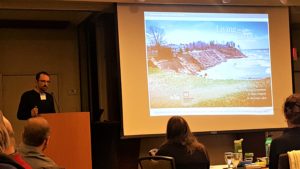
Adam Bechle of Wisconsin Sea Grant presents coastal erosion information resources at the Lake Superior Water Levels Conference. Image by Marie Zhuikov.
On Dec. 11, more than 90 people gathered in Duluth, Minnesota, for a conference on western Lake Superior water levels. They heard and provided the latest intel on what’s going on with the lake and what’s predicted for the near future.
Wisconsin Sea Grant Coastal Engineer Adam Bechle was one of the presenters, along with Michelle Shrider, general manager of the Washburn Marina and chair of the Wisconsin Marine Association, a nonprofit organization that focuses on issues facing the recreational boating industry in Wisconsin.
Melissa Kropfreiter with the U.S. Army Corps of Engineers provided an overview of water levels in Lake Superior and the other Great Lakes. The corps has tracked water level fluctuations for 100 years. She said natural processes such as rainfall and ice cover have a far greater impact on lake levels than do more direct manmade influences such as water flow controls.
“There is nothing man can do to control these lakes,” Kropfreiter said. “We can influence them by a matter of inches, but we can’t control them.”
The past five years (ending October 31, 2019) have been the wettest on record for the Great Lakes basin. Looking ahead, Kropfreiter said the outlook is for wetter than normal weather for the next three months. Water levels in Lake Superior are expected to remain high and new record highs could be set again in the coming year.
An audience member asked Kropfreiter if extremes in water levels are the new normal. She responded affirmatively, saying that her professional colleagues predict that higher highs and lower lows will occur more frequently.
Brandon Krumweide, the Great Lakes regional geospatial coordinator for the National Oceanic and Atmospheric Administration (NOAA) Office for Coastal Management in Duluth played with some water numbers. He noted that only about a meter separates Lake Superior’s record high and low water levels. The record low was recorded in 2007, and the record high was recorded in October this year (2019). Although a meter of water doesn’t sound like much, Krumweide calculated that the amount of water gained by the lake between 2007 and 2019 is enough to fill 62.4 million Olympic-size swimming pools!
He noted that wind is also increasing. Many of the worst recent gales have occurred during the month of October. These cause high waves and more erosion along the coast.
When asked if locals should change the stock “Gales of November” phrase to the “Gales of October,” Krumweide said he prefers the term “The Gales of Fall,” because many of the wind storms occur in that season.
During a panel presentation on local perspectives of water level impacts, Shrider said that ice and high-water levels in winter are causing dock damage in her marina and other marinas. She reminded the audience about the damage done to Saxon Harbor’s walls and breakwaters by recent storms. In Washburn, the top of the break wall broke off during a storm and needed to be repaired.
The recent windy and wet weather has heavily impacted tourism. “There’s a shrinking population of boaters who are willing to go out in less-favorable weather conditions as they age,” she said. “Our marinas are full, but the boats don’t leave their slips.” This also means that boaters are not inviting their friends to go out with them as much, which has led to declines in lodging income for her local communities. She said numbers were down 15-20% this year and 10% last year.
During his presentation, Bechle described several sources of information that Sea Grant offers to people who are dealing with water level issues. The first is “Living on the Coast,” a free 50-page booklet that describes the natural processes that cause erosion, how people can protect their coastal investments, and the economics of different protection actions.
Sea Grant also offers many fact sheets on related topics, which can be found online here.
The conference wrapped up with small group sessions where people moved around the room and identified critical resources that could help their communities address lake level impacts and improve resilience.
The Lake Superior highs and lows conference was organized by the Lake Superior National Estuarine Research Reserve, the Minnesota Department of Natural Resources, NOAA, Minnesota Sea Grant and the Wisconsin Coastal Management Program.
Blog – Wisconsin Sea Grant
https://www.seagrant.wisc.edu/blog/the-gales-of-october-lake-superior-water-levels-conference-highlights-highs-and-lows/
Coalition Urges House to Vote on Great Lakes Restoration Re-authorization
Bi-Partisan bill would increase restoration funding from $300 million to $475 million per year.
ANN ARBOR, MICH. (December 4, 2019) – The Healing Our Waters – Great Lakes Coalition sent a letter to Speaker of the House Nancy Pelosi yesterday, urging the House of Representatives to bring H.R. 4031, the Great Lakes Restoration Initiative Act of 2019, to the floor for consideration this year. The act re-authorizes the successful Great Lakes Restoration Initiative and increases the annual authorization over five years from $300 million to $475 million per year.
“Over the past decade the GLRI has improved lives across Great Lakes communities after decades of environmental damage threatened public health, the regional economy, and drinking water,” the letter reads. “The GLRI has allowed the 8-state region to undertake one of the world’s largest freshwater ecosystem restoration projects. Since its inception, the initiative has resulted in economic returns of more than 3 to 1 across the region and made tremendous progress.”
Laura Rubin, director of the Healing Our Waters-Great Lakes Coalition, said:
“This funding re-authorization is excellent news for the 30 million Americans who rely on the Great Lakes for their drinking water, jobs, recreation, and way of life. Over the past decade, the Great Lakes Restoration Initiative has been producing results for communities across the region, but serious threats remain. This increased annual re-authorization acknowledges the work we have left to do. We thank Reps. David Joyce and Marcy Kaptur for their leadership, and we thank the region’s House delegation, who are working in a spirit of bi-partisan cooperation to make sure Great Lakes restoration and protection remain a national priority. We urge the House of Representatives to bring this bill to the floor without delay.”
The post Coalition Urges House to Vote on Great Lakes Restoration Re-authorization appeared first on Healing Our Waters Coalition.
Healing Our Waters Coalition
https://healthylakes.org/coalition-urges-house-to-vote-on-great-lakes-restoration-re-authorization/
Great Lakes Action Plan Offers Steady Path Forward
Last month, the EPA released its long-awaited Great Lakes Restoration Initiative Action Plan III, outlining the strategy guiding federal actions to restore and protect the Lakes being undertaken by federal agencies in partnership with the region.
The plan’s release comes at a time when both the U.S. House and Senate are seeking to increase funding for the Great Lakes Restoration Initiative beyond $300 million per year. Over the last 10 years, Congress has invested over $3.1 billion in Great Lakes Restoration, and securing a strong action plan has long been a priority of the Healing Our Waters – Great Lakes Coalition.
The recently released plan for the Great Lakes hews closely to previously released action plans. It guides federal restoration efforts around four major priorities: cleaning up toxic hot-spots (so-called Areas of Concern), restoring fish and wildlife habitat, working to stop the spread of invasive species such as Asian Carp, and reducing agricultural runoff to fight toxic algal blooms in the Great Lakes.
Here’s our take on the EPA’s action plan:
1. These are the right priorities to focus on – taken together, they point to a solid plan for restoring and preserving the health of the Great Lakes.
2. It’s going to take robust funding and strong policy to make this plan a reality. In addition to robust funding for restoration projects, it will be essential to have strong policies in place that protect the Great Lakes and the waters that feed them. The Trump Administration and the EPA must reverse its decision to gut protections for streams, waterways and wetlands. With many cities and towns still living with unsafe drinking water, now is not the time to cut back on clean water enforcement. We need to strengthen clean water protections, not roll them back.
3. Robust investments in water infrastructure are also needed to ensure that restoration efforts last for the long term. Aging sewer and stormwater infrastructure threaten the health of the Great Lakes and the health of the millions of Americans who rely on the lakes for drinking water. The Great Lakes region faces at least $179 billion of needed improvements to its water infrastructure to provide local communities with drinking water and wastewater services. It’s imperative that Congress boost investments to fix our crumbling infrastructure.
4. The bipartisan support for Great Lakes restoration continues to pay dividends. Over the last decade, Republicans and Democrats have come together to make Great Lakes restoration a national priority and to provide much-needed funding for restoration efforts. That cooperation continues. Recently the U.S. Senate recommended increasing Great Lakes Restoration Initiative funding from $300 million to $310 million; and the U.S. House boosted restoration investments from $300 million to $320 million. The final budget is yet to be determined—yet it’s clear that bipartisan cooperation has been essential to success. The Great Lakes congressional delegation has shown great leadership to make that funding a reality.
5. Climate change will only exacerbate threats to the lakes—and needs to be taken into account as restoration efforts move forward. As climate change continues its course, the Great Lakes region is witnessing more intense storms, greater flooding, more shore erosion and more runoff pollution that fuels toxic algal outbreaks. These new challenges will require continued investment in the lakes, as well as solid plans to ensure that their worst effects can be mitigated.
6. Future plans must explicitly address equity and justice issues. Low-income communities and communities of color are bearing the brunt of environmental degradation caused by pollution and climate change. Yet, traditionally, these communities have been the least likely to have a seat at the table when solutions are being devised. Any plan to restore the Great Lakes must take these inequities into account and take the lead from these communities.
Moving forward, the Healing Our Waters – Great Lakes Coalition looks to work with Congress to finalize the restoration funding allocation and maintain funding for the long term. We also seek to secure funding to upgrade vital water infrastructure and to eliminate the rollbacks of clean water protections that threaten the health and vitality of our lakes.
The post Great Lakes Action Plan Offers Steady Path Forward appeared first on Healing Our Waters Coalition.
Healing Our Waters Coalition
https://healthylakes.org/great-lakes-action-plan-offers-steady-path-forward/
Guest post by Bridget Faust, 2018-19 Wisconsin Sea Grant Fellow
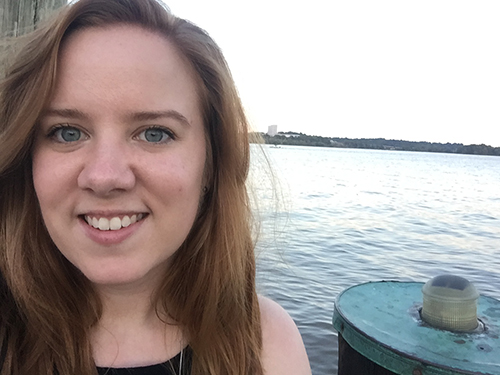
Bridget Faust
I arrived at the Hall of the States first thing in the morning on April 2, 2018. As I walked up to the building, I glimpsed the top of the Capitol dome and couldn’t help but smile. I thought to myself, “I live here now. I work here now.”
It was my first day at the Coastal States Organization (CSO), and I was nervous. I quickly signed myself into the building, made my way up to the sixth floor, took a deep breath and walked into the office where I’d be spending about half my time for the next 15 months. The space was small. Three offices and three cubicles fit snugly inside. The walls were aquarium blue.
Days later, I repeated this exercise when I went to NOAA’s Silver Spring office for the first time. The sound of waves breaking in the wave pool that stands outside of SSMC4 told me that I was in the right place.
And so it began. After five years of working towards this fellowship opportunity, I was in D.C. serving as a Wisconsin Sea Grant Fellow in a joint position with NOAA’s Office for Coastal Management (OCM) and CSO.
During my time in D.C., I worked on a variety of things that OCM and CSO work on together and helped them to improve their coordination. This included supporting implementation of the National Coastal Zone Management Program Strategic Plan by coordinating the Digital Coast Resource for Coastal Managers webinar series, helping to run CSO’s Coastal Nonpoint Work Group, supporting the administration of the Coastal Nonpoint Pollution Control Program, and serving on the project team for an economic assessment scoping study of the National CZM Program.
Time passed more quickly than I could have imagined, and along the way, I learned some major lessons that I will carry with me for the rest of my career. I have summarized these lessons below for any recent graduate or graduate student who is considering applying to a fellowship program.
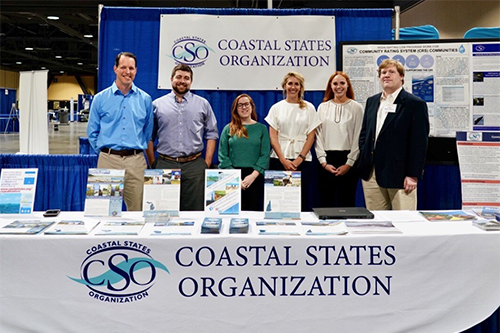
At the Restoring America’s Estuaries / Coastal States Organization summit in Long Beach, California.
Say yes to new and challenging opportunities.
During my time as a fellow, I was asked to take the lead on a number of tasks that pushed me outside of my comfort zone. For example, having never worked in the nonpoint source pollution realm, facilitating calls on the Coastal Nonpoint Pollution Control Program seemed like a daunting task. After all, I wasn’t an expert. How could I help states that have so much more experience? Working with the work group ended up being one of the most rewarding experiences of my fellowship, and I am so glad I ended up saying yes to the opportunity. Fellowships provide recent graduates with a rare chance to try new things! I would encourage future fellows to say yes when they are asked to try something new to benefit fully from this experience.
Know what you want to get out of your fellowship before you start.
Before I even started my fellowship, I outlined learning objectives and experiences that I wanted to gain with my career goals in mind. While I didn’t end up accomplishing all of them, knowing what I wanted to get out of my fellowship before I started allowed me to tailor my experience so it not only benefited OCM and CSO, but also allowed me to gain the skills that I needed to build my resume.
Ask questions, even if they seem foolish.
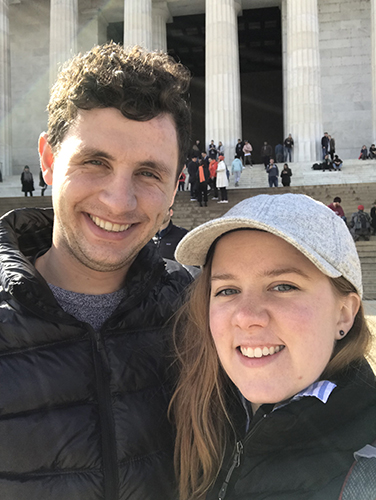
Exploring D.C. with my fiance, Josh.
This probably goes without saying, but the old adage is true: there’s no such thing as a stupid question. Almost a year into my fellowship, I made the mistake of assuming that staff didn’t need to register for a meeting that we were helping to plan. That’s how it had been at my last job, so why wouldn’t it be the same here, right? Wrong. I did need to register and by the time I asked the question, the meeting was just weeks away. Everything worked out in the end, but the stress of the situation could have been avoided had I just asked instead of making an assumption.
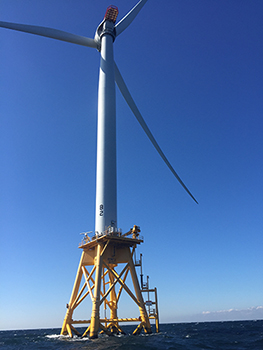
I had a chance to see the Block Island Wind Farm up close during a site visit for CSO’s fall meeting in Providence, Rhode Island.
The Wisconsin Sea Grant Fellowship was a once-in-a-lifetime opportunity to gain practical experience applying the skills I’d learned as a graduate student at UW-Madison.
It also helped to prepare me for the job I currently have today. Since July 2019, I have been working for CSS, a private sector firm in the environmental services industry, as a coastal management specialist on contract to NOAA’s Office for Coastal Management. I live and work from the Twin Cities area, which is home for me.
Aside from being in a different location, my day-to-day tasks have not changed significantly since my fellowship ended. I am still supporting National CZM Strategic Plan implementation and Coastal Nonpoint Pollution Control Program administration. I am part of the economic assessment project team, and I still work closely with my former colleagues at CSO. The only major difference is that I no longer formally wear a CSO “hat.”
In sum, I’d highly recommend one of Sea Grant’s many fellowship programs to current graduate or Ph.D. students who are looking for practical experience outside of academia!
Photo credits: All photos in story submitted by Bridget Faust.
Blog – Wisconsin Sea Grant
https://www.seagrant.wisc.edu/blog/lessons-learned-as-a-sea-grant-fellow/
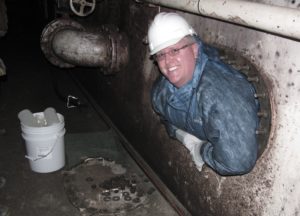
Matt TenEyck, climbing out of a ballast water tank on a ship. Image by Carol Wolosz.
Matt TenEyck with the University of Wisconsin-Superior Lake Superior Research Institute presented the November River Talk at the Lake Superior Estuarium. His talk, “Influencing Industry and Research: Ballast Water,” offered the latest news in ballast water research.
TenEyck’s institute recently took over management of the ballast water testing facility located on Montreal Pier in the harbor near Barker’s Island. Called the Great Water Research Collaborative, the project provides scientific services to the maritime industry to promote “green shipping.” TenEyck said its focus is to test technologies designed to prevent new ballast water introductions of invasive species in the Great Lakes.
Contrary to popular belief, this does not mean that such systems would kill everything in the discharged ballast water. “The standard these technologies need to meet is fewer than 10 animals alive in 1,000 liters of water.”
Many of the audience members were eating popcorn in liter cardboard containers, and TenEyck pointed out that the standard was the equivalent of 10 organisms alive in about 1,000 popcorn containers.
“This is actually a higher sterility standard than hospitals are held to,” TenEyck said. “It’s a matter of risk management.” Also, such systems need to remove viruses and cannot discharge toxic substances back into the harbor.
The research collaborative solicits ballast water treatment ideas from the public. The staff then tests the ideas to see if they work. This can happen in several different ways: bench-testing, which is done in a lab; land-testing, which is done at the Montreal Pier facility; and/or shipboard testing, which is done on working ships either in the Great Lakes or oceans.
Some of the recent bench-testing they’ve done includes technologies that use sound waves or electric currents.
Land testing makes use of four large white mock ballast tanks that are the major features of the Montreal Pier facility. TenEyck explained that two of the tanks are used for treatment testing and the other two function as scientific controls. They collect data during experiments every 15 seconds.
Shipboard testing involves using a proposed technology on a ship for six months in a variety of water quality conditions.
After testing, the collaborative shares the results with the inventors. TenEyck said that so far, they’ve tested 26 bench-scale systems, of which four had promise. They’ve also tested 15 land-based systems and three shipboard systems. They have used things like chlorine, lye, hydrogen peroxide, ultra-violet light, ultrasound and sonic energy.
Only one other ballast water research facility exists in the U.S.: the Golden Bear Research Center in California.
The search for a workable system continues. “Our job is to be knowledgeable and provide sound science for the process,” TenEyck said. “We have no stake in the outcome. We serve as a third party and provide credible data.”
The next River Talk will take place at 7 p.m. on Jan. 8, 2020, also at the Estuarium. Duluth Seaway Port Authority Director Deb DeLuca will discuss issues that the Duluth-Superior Harbor faces.
River Talks is an informal monthly series about the St. Louis River Estuary hosted by the Lake Superior National Estuarine Research Reserve and the Minnesota and Wisconsin Sea Grant programs.
Blog – Wisconsin Sea Grant
https://www.seagrant.wisc.edu/blog/river-talk-explored-ballast-water-research-at-uws/
Lake County, Indiana – Open House Presentation [.pdf] – CCO Meeting Presentation [.pdf]
Press Release [.pdf]
Wednesday, December 11, 2019
CCO Meeting 2-4 pm | Open House 5-7 pm
Hammond Port Authority – Clipper Room
701 Casino Center Drive
Hammond, Indiana 46320
Van Buren County, Michigan – Open House Presentation [.pdf] – CCO Meeting Presentation [.pdf]
Press Release [.pdf]
Thursday, December 12, 2019
CCO Meeting 2-4 pm | Open House 5-7 pm
South Haven City Hall – Council Chambers
539 Phoenix Street
South Haven, Michigan 49090
Great Lakes Coastal Flood Study
Great Lakes Coastal Flood Study
https://www.greatlakescoast.org/2019/11/18/lake-michigan-community-consultation-officers-meeting-and-open-house-for-lake-county-indiana-and-van-buren-county-michigan/
The Fox River Navigational System Authority board of directors approved conducting a suite of studies to provide more complete information to the DNR on the behavior of round gobies in an electric barrier environment. This series of studies would provide the following information:
Four of the studies would be conducted in a laboratory, the fifth study is optional and would be conducted in one of the closed locks. If all five studies are conducted, the cost would be about $165,000, paid from FRNSA’s capital budget.
This will be the first such scientific study on the behavior of the round goby from larval to adult stages. Consultants are confident the studies will answer all questions raised by the DNR and provide definitive information on the fish’s response to electric currents and water velocity, two components central to the electric barrier proposed for the Menasha lock. For more information, visit this link.
Blog – Fox Locks
http://foxlocks.org/2019/11/16/update-on-menasha-lock/
Enjoy some of the historic photos from our archives. If you can identify the location or the date for any of these photos, please send us an email on our contact page. Enjoy the walk back in time!
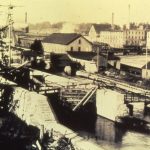
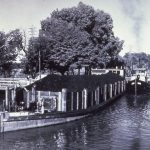

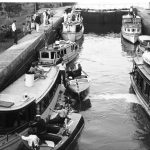
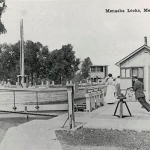
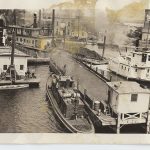
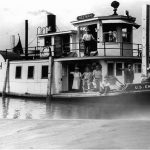
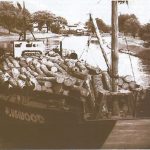
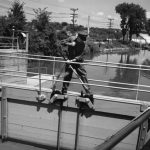
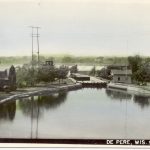
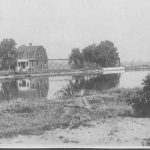
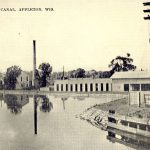
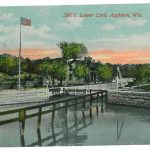

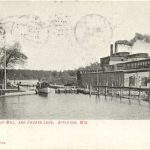
Blog – Fox Locks
http://foxlocks.org/2019/11/15/historic-photo-gallery/
This summer, scientists from the U.S. Geological Survey set up at the closed lock 2 in Kaukauna and conducted a series of studies designed to assess the effects of a carbon dioxide barrier. The team built a large carbon dioxide infusion system and operated it in the closed lock and pond, taking thousands of measurements and recording data. This winter, scientists will assess the data to determine the effectiveness of a CO2 barrier in deterring fish, and the potential effects on animals, the river, and the atmosphere. Listen to this short video for more information and watch for the results in 2020!
Blog – Fox Locks
http://foxlocks.org/2019/11/15/study-underway-on-co2-barriers/
A meeting of the Board of Directors will be held tomorrow morning via conference call. As this is a public meeting, interested parties will be able to dial into the meeting according to the attached information. The purpose of the call is to review and vote on emergency repairs to Appleton lock 4.
PUBLIC MEETING NOTICE 11.15.19
Blog – Fox Locks
http://foxlocks.org/2019/11/14/public-meeting-notice/
Muskegon County, Michigan – Open House Presentation [.pdf] – CCO Meeting Presentation [.pdf]
Press Release [.pdf]
Tuesday, December 3, 2019
CCO Meeting 2-4 pm | Open House 5-7 pm
Muskegon Community College – The University Room
221 Quarterline Road
Muskegon, Michigan 49442
Ottawa County, Michigan – Open House Presentation [.pdf] – CCO Meeting Presentation [.pdf]
Press Release [.pdf]
Wednesday, December 4, 2019
CCO Meeting 2-4 pm | Open House 5-7 pm
Ottawa County Emergency Management – Training Room
12220 Fillmore Street
West Olive, Michigan 49440
Allegan County, Michigan – Open House Presentation [.pdf] – CCO Meeting Presentation [.pdf]
Press Release [.pdf]
Thursday, December 5, 2019
CCO Meeting 2-4 pm | Open House 5-7 pm
Allegan District Library – Carnegie Room
331 Hubbard Street
Allegan, Michigan 49010
Great Lakes Coastal Flood Study
Great Lakes Coastal Flood Study
https://www.greatlakescoast.org/2019/11/05/lake-michigan-community-consultation-officers-meeting-and-open-house-for-muskegon-ottawa-and-allegan-counties-michigan/
In a few short weeks, the Aquatic Sciences Center (ASC) will bid a fond farewell to Morgan Witte, who has served as a graduate project assistant since fall 2018. Witte, who works mainly with the Wisconsin Water Library, will graduate in December with a master’s degree from UW-Madison’s Information School. Senior Special Librarian Anne Moser has been her primary mentor at the ASC.
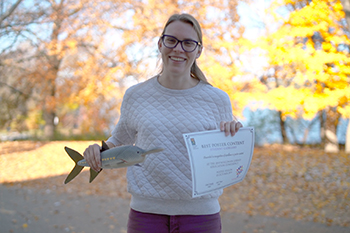
Morgan Witte holds a sturgeon decoy made by master carver George Schmidt and her most recent award. (Photo: Bonnie Willison)
Witte departs with two awards for her work on sturgeon-related projects that have extended the reach of “People of the Sturgeon: Wisconsin’s Love Affair with an Ancient Fish,” the well-loved book written by Kathy Kline, Fred Binkowski and Ronald Bruch. This has included cataloging and finding a permanent digital home for related audio files, as well as a well-attended exhibition on all things sturgeon in Fond du Lac. A poster Witte created about the sturgeon work was honored in the “Best Content” category at the recent yearly conference of the Wisconsin Library Association. The poster also won “Best Content” earlier this year at a conference specifically for academic librarians. (Learn more here.)
Said Moser, “Morgan has done an extraordinary job here at the ASC during her graduate program. These awards are well-deserved recognition of her innovation, hard work and contributions.”
Witte, who is graduating a semester early, has found her time at the Water Library eye opening. Robust, statewide outreach and educational programming are a major part of the library’s mission—something not typical for an academic library on a university campus.
The library collects materials one might not expect, such as children’s books and curriculum materials. It also develops STEM kits for kids that anyone in Wisconsin (like classroom teachers, librarians and parents) can borrow for free.
“Because of the materials this library collects,” said Witte, “I think that lends itself a lot to that outreach mission. I really hope to take that with me to wherever I work after this, because it’s so great to see not only the impact the library has on communities, but the impact those communities then have on the library. That influences your collection and what pieces of your collection you choose to highlight at what times of the year. And building those connections in a community can really strengthen the library, as well as the other way around.”
Her experience at the ASC has also given Witte exposure to its two programs, Wisconsin Sea Grant and the Water Resources Institute. “An inspiring part of this job is I’ve had a chance to learn from people who are doing amazing and innovative things in their respective fields.”
When Witte leaves the ASC, she’ll embark on an exciting new chapter of her life: relocating to Colorado to join her fiancé, who recently landed his dream job in Fort Collins as a wildlife geneticist. There, Witte—who is originally from Mount Horeb, Wisconsin—will job-hunt as she puts down roots in her new community.
Whether she lands in a public, academic or government library, she’s eager to apply her background in the sciences with the skills she honed at the Water Library, especially with regard to outreach and public programming.
She’s been a great asset to the ASC for the past year and half, and we wish her well in her future endeavors!
Blog – Wisconsin Sea Grant
https://www.seagrant.wisc.edu/blog/morgan-witte-honored/
 In September of 2015, FRNSA voluntarily closed the Menasha lock at the request of the Department of Natural Resources (DNR) to prevent the spread of an invasive fish, the round goby, which was discovered in Little Lake Butte des Morts. The goby is one of 192 invasive species found in Lake Michigan. The invasive species barrier at the Rapide Croche lock prevents transmission of any species from the Great Lakes into the lock system and eventually the Lake Winnebago watershed.
In September of 2015, FRNSA voluntarily closed the Menasha lock at the request of the Department of Natural Resources (DNR) to prevent the spread of an invasive fish, the round goby, which was discovered in Little Lake Butte des Morts. The goby is one of 192 invasive species found in Lake Michigan. The invasive species barrier at the Rapide Croche lock prevents transmission of any species from the Great Lakes into the lock system and eventually the Lake Winnebago watershed.
What do we know about round goby behavior?
Fish are uniquely sensitive to electrical currents because their muscle control is based on electrical impulses through their nervous system, and because they inhabit a conductive environment. Electrical barriers and guidance systems make use of this sensitivity.
We have reviewed results of scientific reports from researchers from the U.S. Geological Survey (USGS). Based published research, we know these characteristics of the round goby:
How did the round goby get here?
The round goby is an invasive fish found in the Great Lakes. Several were found in Little Lake Butte des Morts in September of 2015. When they were discovered, the lock system was not open to the Great Lakes and there were no populations of round gobies in Lake Winnebago according to DNR testing. Additionally at the time of discovery, there were three miles of dry canal and three de-watered locks between Little Lake Butte des Morts and Kaukauna. It is important to remember the Fox River flows north and it is impossible for fish to travel from the bay of Green Bay to Lake Winnebago through the lock system due to the barrier at the Rapide Croche lock. The round goby were most likely introduced into the system as fishing bait, or on pleasure boats that were not adequately cleaned.
Is the Menasha lock the main entry point for round gobies?
No. Since the fish was found, there is a verified population in Little Lake Butte des Morts. Currently, there are more than 60 boat landings into Lake Winnebago that are not monitored, and each summer float planes land in Lake Winnebago thus increasing access points for invasive species.
Blog – Fox Locks
http://foxlocks.org/2019/10/28/round-goby-facts/
Scientists with the U.S. Geological Survey and the Geological Surveys of Illinois, Kentucky and Indiana are partnering to image geology using airborne geophysical technology as part of the USGS Earth Mapping Resource Initiative (Earth MRI) project.
For this tri-state survey, the USGS is contracting with EON Geosciences and will fly over all or parts of 23 counties in southeastern Illinois, western Kentucky and southern Indiana. The planes and crew will be based out of the Barkley Regional Airport in west Paducah, Kentucky. The survey began in early October and will be completed in December.
The survey will be flown at elevations approximately 80 to 300 meters, or about 260 to 1,000 feet, above ground in a grid pattern along east-west flight lines spaced approximately 200 meters, or 650 feet, apart. North-south flight lines will be spaced 3,000 meters, or 9,800 feet, apart. All survey flights will occur during daylight hours.
A Piper Navajo airplane with tail stinger magnetometer in flight.
(Credit: Courtesy EON Geosciences, Inc.)
Two Piper Navajo airplanes will be mounted with sensors that measure variations in the earth’s magnetic field. These variations are created by different rock types up to several miles beneath the surface. Each plane will also include sensors that measure soil and rock chemistry at the surface. None of the instruments carried on the aircraft pose a health risk to people or animals. The aircraft will be flown by experienced pilots that are specially trained and approved for low-level flying. All flights are coordinated with the FAA to ensure flights are in accordance with U.S. law.
This survey is one of five large airborne geophysical campaigns being conducted across various parts of the U.S. The surveys will help understand the geology over areas that may contain critical mineral-bearing deposit types. The 2019-2020 Earth MRI focus is to better understand several types of rare earth element deposits that occur within the five airborne geophysical surveys. Data collected as part of all five surveys will be made public and used to guide more detailed geologic mapping at local scales. When the data analysis is complete, results will provide state-of-the-art, subsurface maps that will contribute to a wide range of 3D representations of the nation’s exposed and concealed geology.
Earth MRI is a cooperative effort between the USGS, the Association of American State Geologists and other federal, state and private sector organizations to improve knowledge of the geologic framework in the U.S.
Map indicating flight area for tri-state low-level flight survey. The flights will cover 23 counties in Illinois, Kentucky and Indiana, and are included within the red rectangle. Flights began in October and are expected to conclude in December, 2019.
(Public domain.)
USGS.gov
https://www.usgs.gov/news/low-level-flights-image-3d-geology-illinois-kentucky-and-indiana
Editor: In the public interest and in accordance with the Federal Aviation Administration regulations, the USGS is announcing this low-level airborne project. Your assistance in informing the local communities is appreciated.
Region 3: Great Lakes
http://www.usgs.gov/news/technical-announcement/low-level-flights-image-3d-geology-illinois-kentucky-and-indiana
St. Clair County, Michigan – CCO Meeting Presentation [.pdf]
Press Release [.pdf]
Wednesday, November 13, 2019
CCO Meeting 2-4 pm | Open House 5-7 pm
St. Clair County Administrative Office – Dodge Auditorium
200 Grand River Ave.
Port Huron, Mich. 48060
Sanilac County, Michigan – CCO Meeting Presentation [.pdf]
Press Release [.pdf]
Thursday, November 14, 2019
CCO Meeting 2-4 pm | Open House 5-7 pm
Lexington Village Hall – Council Chambers
7227 Huron Ave.
Lexington, Mich. 48450
Great Lakes Coastal Flood Study
Great Lakes Coastal Flood Study
https://www.greatlakescoast.org/2019/10/15/lake-huron-community-consultation-officers-meeting-and-open-house-for-st-clair-county-and-sanilac-county-michigan/
 Many of our customers and concerned citizens have asked specific questions about the proposed electric barrier for the Menasha Lock. We’re answering some of those questions here in order to give you the facts about the propsed project.
Many of our customers and concerned citizens have asked specific questions about the proposed electric barrier for the Menasha Lock. We’re answering some of those questions here in order to give you the facts about the propsed project.
Where will the barrier be located?
The barrier will be constructed immediately downstream of the Menasha lock (remember, the Fox River flows north from Lake Winnebago to Green Bay). The lock is located at 82 Broad Street in the City of Menasha. FRNSA leases the property immediately around the lock from the State of Wisconsin.
What changes are proposed for the Menasha lock?
The proposal calls for building a 100-foot long concrete channel, 36 feet wide with vertical walls approximately 13 feet high (2’ will be visible above the waterline). Electrodes will be recessed in the concrete to create a pulsed DC electrical current. A portion of the riverbank on each side of the channel will be filled in to support the concrete channel. The plan calls for installing failsafe systems in the event of a power outage that include a backup natural gas powered generation system, an uninterpretable power supply to cover any possible lapse in power, and almost a dozen other closely monitored alarm controls that will alert operators to any system changes. The system is being built for future adaptability in mind to deter other invasive species.
Is the electric barrier dangerous to humans?
The barrier uses a pulsed field of direct current (DC) in the water that is not dangerous to humans on shore or in their boats. When going through the proposed barrier, boaters must follow a few safety precautions that are normally required for transit through the locks:
Passengers must not get on or off a boat within locks or the lock channel
Where are electric barrier systems currently in use?
Use of electricity to guide and block fish is not a new concept and was derived from electroshocking technology used by fishery departments in nearly all states. Electrical barriers built in the 1950s and 1960s are still in operation. Electric barriers are custom-designed for each situation and, as such, include a wide variety of barrier geometries, waveforms, and field strengths. In short, the objective of each barrier and guidance system is what drives the system design.
More than 70 Smith-Root-designed electrical barriers and guidance systems have been installed across the globe. In Midwestern states such as Minnesota, Michigan, and Illinois Smith-Root has 28 pulsed DC electrical barriers in operation for multiple years and monitoring shows the barriers operate reliably.
The design proposal is currently 60% complete and has been submitted to the state DNR for review and approval. For more information including design proposals, construction proposals, and supporting documentation, visit this link.
Blog – Fox Locks
http://foxlocks.org/2019/10/14/get-the-facts-the-menasha-barrier-part-2/
NOAA Great Lakes Environmental Research Laboratory
NOAA Great Lakes Environmental Research Laboratory
https://noaaglerl.blog/2019/10/10/millions-of-microbes-the-unexpected-inhabitants-of-lake-hurons-underwater-sinkholes/
Green Bay, WI
https://www.weather.gov/www.weather.gov/grb/peshtigofire
Green Bay, WI
https://www.weather.gov/www.weather.gov/grb/peshtigofire
“Watching our estimates for the Marcellus rise from 2 trillion to 84 trillion to 97 trillion in under 20 years demonstrates the effects American ingenuity and new technology can have,” said USGS Director Jim Reilly. “Knowing where these resources are located and how much exists is crucial to ensuring our nation’s energy independence.”
The assessment unit map for the Marcellus Shale within the Appalachian Basin. Although it occupies similar areas as the Point Pleasant-Utica Shale, the Marcellus is much younger, having formed in the Devonian age.
(Public domain.)
The Marcellus, Point Pleasant and Utica are extensive formations that cover parts of Kentucky, Maryland, New York, Ohio, Pennsylvania, Virginia and West Virginia.
This is a significant increase from the previous USGS assessments of both formations. In 2011, the USGS estimated a mean of 84 trillion cubic feet of natural gas in the Marcellus Shale, and in 2012 the USGS estimated about 38 trillion cubic feet of natural gas in the Utica Shale.
Significant amounts of natural gas have been produced from the Marcellus and Utica Shales since the previous USGS assessments. USGS assessments are for remaining resources and exclude known and produced oil and gas.
A drill rig at a well site in the Marcellus Shale gas play of southwestern Pennsylvania.
(Credit: Ken Skipper, USGS. Public domain.)
The natural gas in these formations is classified as continuous, because it is spread throughout the assessed rock layers instead of being concentrated in discrete accumulations. Production techniques like directional drilling and hydraulic fracturing are required to produce these resources.
“Since our assessments in 2011 and 2012, industry has improved upon their development techniques for continuous resources like the shale gas in the Appalachian Basin,” said Walter Guidroz, program coordinator for the USGS Energy Resources Program. “That technological advancement, plus all of the geological information we’ve gained from the last several years of production, have allowed us to greatly expand our understanding of these formations.”
The Marcellus Shale also contains an estimated 1.5 billion barrels of natural gas liquids, while the Point Pleasant-Utica Shale also contains an estimated 1.8 billion barrels of oil and 985 million barrels of natural gas liquids. Natural gas liquids are liquid hydrocarbons like propane, butane and/or ethane.
The assessments units of the Point Pleasant-Utica Shale Formation within the Appalachian Basin. Although it occupies similar areas as the Marcellus Shale, it was formed during the Ordovician Period, millions of years prior to the Marcellus.
(Public domain.)
These assessments are for undiscovered, technically recoverable resources. Undiscovered resources are those that have been estimated to exist based on geology and other data, but have not yet been proven to exist by drilling or other means. Technically recoverable resources, meanwhile, are those that can be produced using today’s standard industry practices and technology. This is different from reserves, which are those quantities of oil and gas that are currently profitable to produce.
USGS is the only provider of publicly available estimates of undiscovered technically recoverable oil and gas resources of onshore lands and offshore state waters. The USGS Marcellus and Point Pleasant-Utica Shale assessments were undertaken as part of a nationwide project assessing domestic petroleum basins using standardized methodology and protocol.
The new assessment of the Marcellus Shale can be accessed here. The new assessment of the Point Pleasant-Utica Shale may be found here. To find out more about USGS energy assessments and other energy research, please visit the USGS Energy Resources Program website and follow us on Twitter.
USGS.gov
https://www.usgs.gov/news/usgs-estimates-214-trillion-cubic-feet-natural-gas-appalachian-basin-formations
The Marcellus Shale and Point Pleasant-Utica Shale formations of the Appalachian Basin contain an estimated mean of 214 trillion cubic feet of undiscovered, technically recoverable continuous resources of natural gas, according to new USGS assessments.
Region 3: Great Lakes
http://www.usgs.gov/news/national-news-release/usgs-estimates-214-trillion-cubic-feet-natural-gas-appalachian-basin
It is with extreme sadness that we announce the passing of our Chairman of the Board, Dr. S. Timothy Rose. Dr. Rose was a passionate and energetic advocate for the lock system and his leadership helped restore the lock system and rescue a national treasure. We will miss his dedication, depth of knowledge of the region and the river, and his sense of humor. We are all thankful for the time he invested in the system and will miss him deeply.
To read his full obituary, please visit this link.
Shortly before Dr. Rose passed, we sat down with him to review the important work the Fox River Navigational System Authority has done to re-open the lock system. We share his words with you and hope you also remember a true community servant.
Blog – Fox Locks
http://foxlocks.org/2019/09/30/dr-s-timothy-rose-in-memoriam/
Green Bay, WI
https://www.weather.gov/www.weather.gov/mkx/wisconsintornadoes
Green Bay, WI
https://www.weather.gov/www.weather.gov/mkx/wisconsintornadoes
 The proposed electric barrier at the Menasha lock
The proposed electric barrier at the Menasha lock
For the last three years, the Fox River Navigational System Augthority (FRNSA) has been the only entity that has been leading the charge to find solutions to open the Menasha lock by seeking out proposals using the best available science and new technology. We have invested more than $200,000 to find solutions that use proven scientific studies and believe we have a solution. The proposed electric barrier is the best, most current technology to meet the needs of all parties. The Fox River watershed belongs to all citizens of the state of Wisconsin as well as all recreational and commercial boaters, silent sport users, homeowners, business owners, tour boat owners, fisherman and women, and the non-boating public. The goals of the barrier system are:
We are working with researchers from USGS, ACOE, DNR as well as engineers from OMNNI Associates to review the most recent scientific research on invasive species barriers and solutions that have worked for other communities in the Great Lakes region. Smith-Root, one of the nation’s leaders in aquatic ecosystem management, is designing a plan using a system of electric deterrent barrier and water flow regulation at the Menasha lock to stop the spread of the round goby.
This concept involves building a concrete, U-shaped channel with a smooth surface similar to a pool, adjacent to and downstream from the Menasha lock. Electrodes would be recessed in the bottom of the channel. This type of a barrier will allow boat traffic to pass through the channel while halting the passage of fish. The barrier delivers a pulsing DC current to fish entering the channel, causing them to turn around and not enter the lock; it also uses a flushing flow water velocity process to prevent the round goby from moving into the lock channel. The DC current in the water is not dangerous to humans.
The design proposal is currently 60% complete and has been submitted to the state DNR for review and approval. This proposed design is estimated at $3 million, all of which FRNSA will fund through monies generated from community fundraising and investment income.
For more information, please visit this link.
Blog – Fox Locks
http://foxlocks.org/2019/09/30/get-the-facts-the-menasha-lock-barrier/
NOAA Great Lakes Environmental Research Laboratory
NOAA Great Lakes Environmental Research Laboratory
https://noaaglerl.blog/2019/09/27/ron-muzzi-an-inquisitive-mind-opens-the-door-for-a-career-in-marine-engineering-at-noaa-glerl/
 Another fantastic season for the Fox Locks is in the books! Thank you to all of you who traveled through the locks and every year we hope to make improvements in the experience. Many don’t remember that the locks system has not been in operation since the early 1980s, so an entire generation has grown up without the experience of traveling through the historic lock system.
Another fantastic season for the Fox Locks is in the books! Thank you to all of you who traveled through the locks and every year we hope to make improvements in the experience. Many don’t remember that the locks system has not been in operation since the early 1980s, so an entire generation has grown up without the experience of traveling through the historic lock system.
Speaking of history, here’s a quick look at notable dates and events for the lock system:
1825 Construction of Erie Canal completed, idea of connecting Green Bay and Prairie du Chien via water becomes reality.
1848 Wisconsin becomes a state.
1849 Construction begins on Fox & Wisconsin River improvements
1851 Contracts awarded for lock construction at Kaukauna and Little Chute
1866 Wisconsin Improvement Company, owner of the lock project, declared bankruptcy
1870 Green Bay and Mississippi Canal Company takes over management of the locks
1872 United States Army Corps of Engineers acquires navigational control of the waterway
1886 U.S. Army Corps of Engineers abandons Wisconsin River portion of locks system
1922 Dredging for commercial traffic on the Fox River halts
1959 Last vessel navigates the full length of the Fox River
1982 Army Corps of Engineers recommends the lock system is dismantled
1984 Local citizens and elected officials start a campaign to fund and keep the locks open
1993 Individual locks named to the National Register of Historic Places, part of the National Park Service.
2001 State statute 237 creates the Fox River Navigational System Authority
2004 Ownership of the lock system is transferred from the U.S. Army Corps of Engineers to the State of Wisconsin
2005 Repair and renovation begins on the lock system
2015 All locks are restored to full operational functionality
Fall 2015: Menasha Lock voluntarily closed due to discovery of Round Goby in Little Lake Butte des Morts.
Blog – Fox Locks
http://foxlocks.org/2019/09/16/fox-locks-timeline-history-at-a-glance/
Wisconsin Beach Health - Brown County
Wisconsin Beach Health - Brown County
http://www.wibeaches.us/apex/f?p=181:27
Wisconsin Beach Health - Brown County
Wisconsin Beach Health - Brown County
http://www.wibeaches.us/apex/f?p=181:27
Wisconsin Beach Health - Brown County
Wisconsin Beach Health - Brown County
http://www.wibeaches.us/apex/f?p=181:27